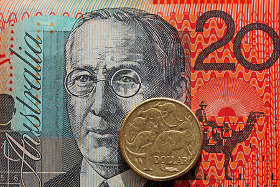
The Australian dollar was extremely soft against other most-traded currencies, with the notable exception of the euro, as the unexpectedly dovish policy statement of the European Central Bank as well as the threat of the US-China trade war put the market into the risk-off mode. Macroeconomic data in Australia and Australia’s biggest trading partner, China, hurt the Aussie as well.
The Australian Bureau of Statistics reported that employment rose by 12,000 in May from April, trailing the average forecast of an increase by 18,800. Furthermore, the gain was only in part-time jobs, while the number of full-time jobs actually decreased. At the same time, the unemployment rate decreased from 5.6% to 5.4%, below the forecast level of 5.5%.
The National Bureau of Statistics of China released a bunch of macroeconomic indicators on Thursday. Among them was industrial production, which rose 6.8% in May, year-on-year, close to the consensus forecast of a 6.9% increase. Other indicators failed to meet expectations. Retail sales rose 8.5%, demonstrating a far slower rate of growth than 9.6% predicted by analysts. Fixed asset investment rose 6.1% in the January-May period compared to the same period of the previous year, whereas economists had forecast the same 7.0% increase as in the previous reporting period.
AUD/USD slumped from 0.7575 to 0.7471 as of 21:15 GMT today. AUD/JPY dived from 83.60 to 82.66. At the same time, EUR/AUD was down from 1.5555 to 1.5480 after rallying to the daily high of 1.5694 earlier.
If you have any questions, comments or opinions regarding the Australian Dollar,
feel free to post them using the commentary form below.